Words Judith Torres
Images Buensalido + Architects
The WAFX Awards are unsolicited. You can’t apply to win.
The World Architecture Festival (WAF) scours Future Project submissions and selects 10 to 12 compelling architectural concepts that address some of the world’s most pressing problems, such as climate change, energy saving and carbon emissions, water wastage and shortage, ageing populations and health issues, smart cities, cultural identity, power and justice.
WAFX’s Ethics and Values category shines a spotlight on projects that grapple with challenges in a strong ethical and values-driven manner.
It is arguably the most significant category to win because it tends to mean that the project has demonstrated not only design excellence but also ethical sensitivity and profound social impact. (Or the likelihood thereof, as it is a future project.)
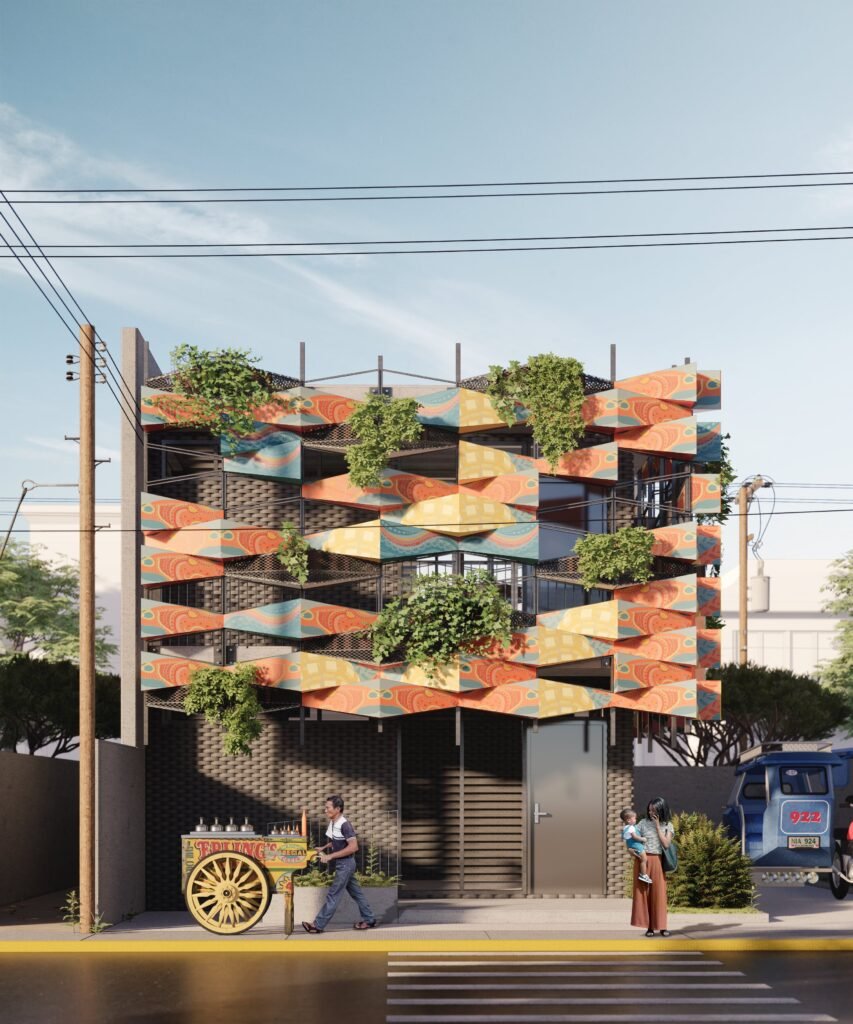

The winning project
The Pangasinan Barangay Centers project, helmed by Buensalido + Architects is a ground-breaking initiative in civic architecture in the Philippines. The project involves the construction of community centers within barangays (the smallest administrative divisions of Philippine government) in the fourth district of the province of Pangasinan. At the onset, the architects were asked to make minimal changes to the original plans designed by the Department of Public Works and Highways, but their approach went beyond mere cosmetic changes.
Buensalido + Architects infused each barangay center with local art, community participation, and sustainable practices. From the use of locally-produced round bricks to the active involvement of barangay folk in the construction process, each center serves as a unique reflection of its locality. This project underscores the significance of architecture not just as a physical structure, but as a catalyst for community building and local empowerment.
When you win a WAFX category
The WAFX category win makes Buensalido + Architects eligible to compete against ten or eleven other WAFX category winners for WAFX Project of Year. The great thing about a WAFX win is, Buensalido + Architects walks into the festival on November 29 knowing they’ve already won an award. And, they get one hour to discuss their project with the WAFX jurors.
This is entirely separate from the competition Buensalido + Architects entered under WAF’s Future Project, Civic and Community category, where competitors present their project and answer questions in 20-minute crits. Winners of Future Project categories then compete against each other in another round of 20-minute crits for WAF Future Project of the Year.
Major prizes are announced on December 1st, the third and last day of the festival, this year being held at Singapore’s Marina Bay Sands.
This is a sweet, sweet win for Buensalido + Architects, a validation of their ethos and approach to architecture, which is community-driven and mindful of their projects’ social and environmental impacts.
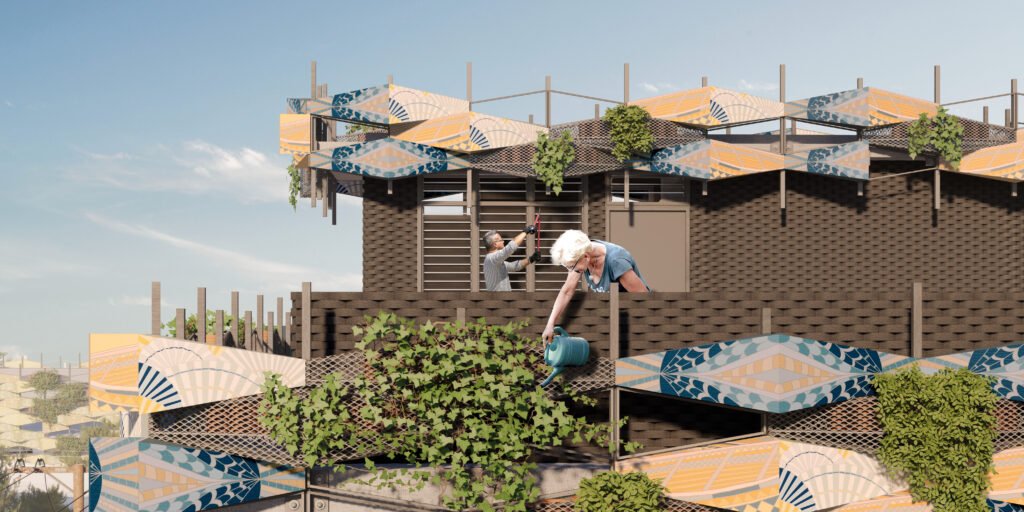

Buensalido + Architects values
The win also affirms the weight Buensalido + Architect’s places on values and culture in their practice. The office has a VP for Culture, Nikki Buensalido, who also sits in the firm’s Design Board. She is responsible for fostering an office culture conducive to growth and innovation, and ensuring employee engagement and satisfaction. She also oversees the company’s civic affairs and community engagement. Assisting Nikki in culture building, learning and development, and talent management is Associate Architect for Culture Cholo Ramirez.
B+A Design Ambassador Jason Buensalido further articulates the significance of their winning project, underscoring that it embodies the culmination of their deeply held beliefs. “It summarizes our ideas on the potential inherent in contemporary Philippine architecture when our identity as Filipinos is asserted within the built environment.”
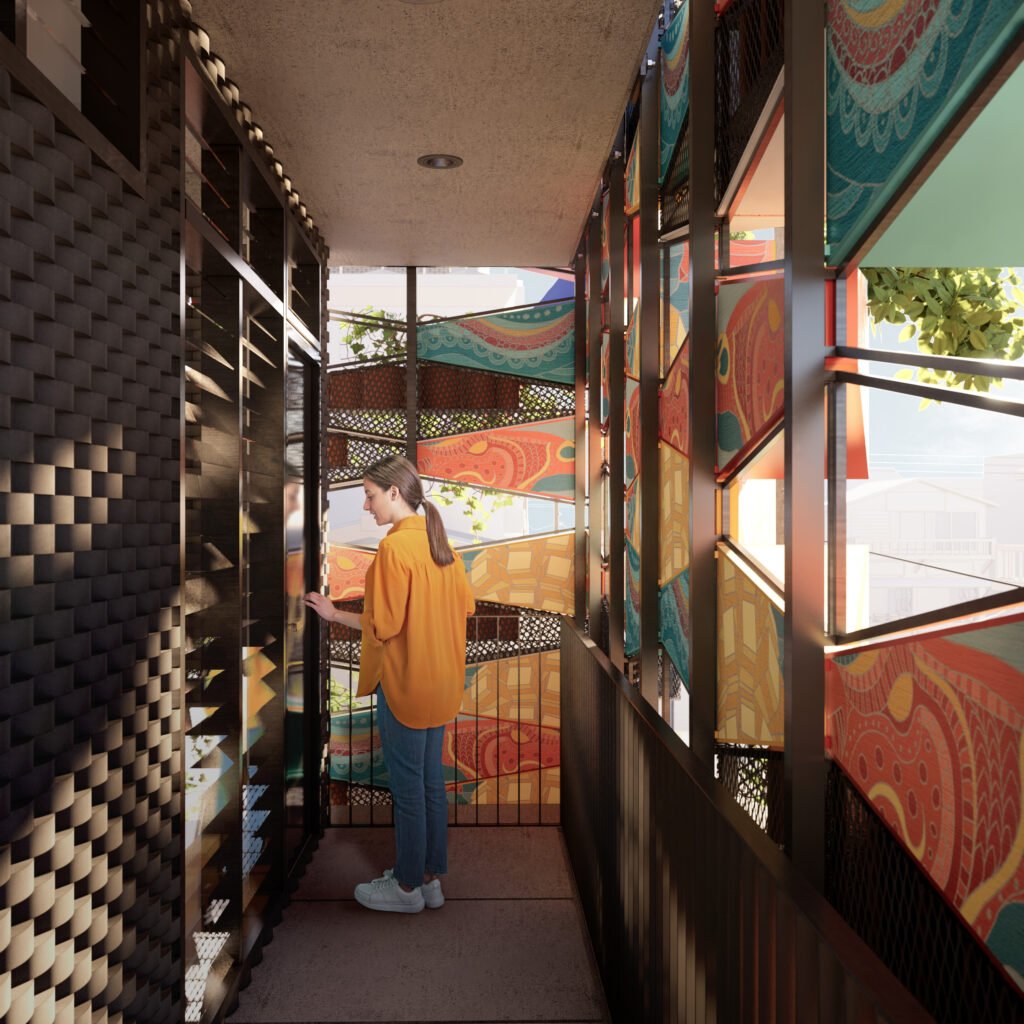

Buensalido’s Four Points of Philippine Culture in Architecture
“We’ve talked about this many years ago, right?” Buensalido reminds me before he counts off the four points.
- “First is responsiveness, with traditional structures like the bahay kubo, bahay na bato, Torogan house, and Samal house serving as quintessential examples of architecture in harmony with its surroundings.
- Second, the importance of personalization and community participation, underscoring the role of individual identities and collective effort in shaping architecture.
- Third, the concept of ‘Architecture of Optimism’, a belief that design should embody resilience fueled by hope and celebration, to inspire action towards positive change
- And finally, the principle of ‘weaving,’ acknowledging our cultural diversity and plurality, and celebrating through built form that we are a rich tapestry of diverse cultures.”
Then, Buensalido refers to deeply entrenched negative attitudes that the firm challenges through their work:
- “Our vision is to counter the Filipino ‘mentality of the small,’ that feeling of powerlessness, with our conviction that architecture, no matter its scale, can be a catalyst for positive change.
- “We counteract the complacent ‘puede na yan’ attitude with our relentless pursuit of progressive excellence.
- “We strive to replace colonial mentality with a fierce pride in our national identity.
“These are the values we’ve practiced in all our projects over the years. We hope people will see these evidenced in the barangay centers as they are built.” Ultimately, post-occupancy evaluations will determine whether their aspirations have come to fruition, he adds.
Fitting in versus challenging the existing architectural landscape
Buensalido says there are two ways of responding to the context in architectural design: blending in or employing interventions to uplift the existing architectural landscape. He believes both methods have their place in various circumstances, but when it comes to revitalizing communities, his firm chooses the latter approach.
B+A introduces optimism into dispirited locales. Their architectural interventions, reflecting the joyous character of Filipino festivities, are meant to serve as catalysts for change and beacons of hope. The aim is not to gentrify, but to spark behavior change and instil community pride and ownership. Their hope is that a ripple effect of their work spreads across the community, replacing resignation with action and indifference with care—one building at a time.
The architect shares that they’ve observed positive changes in communities surrounding their past projects. The Interweave Building, for instance, was shortlisted in WAF 2021 and highly commended for ‘Best Use of Color.’ The Biker’s Den in Pangasinan also exemplifies this transformation. This project was carried out for Congressman Christopher de Venecia, who is also the driving force behind the Pangasinan Barangay Centers.
Cong Toff
Congressman Christopher ‘Toff’ De Venecia’s proposed bill to mandate architectural roles in local governments underscores his advocacy for Philippine creative industries. His collaboration with Buensalido + Architects on the Pangasinan Barangay Centers project is a powerful testament to this advocacy, transforming these centers into symbols of local identity and pride. The WAFX win offers a compelling argument for the passage of his bill, highlighting the pivotal role of architecture in community development and nation-building. Hopefully, the win will strengthen the case for his legislative efforts, proving the potential impact and benefits of his proposed amendments to the Local Government Code.
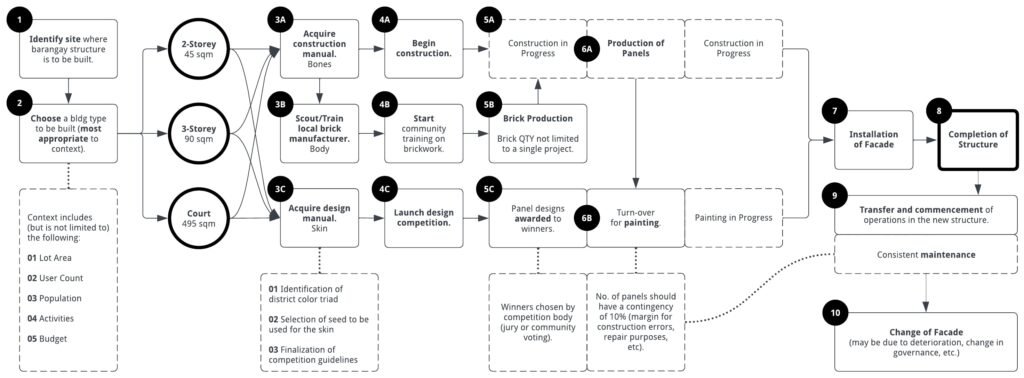

Why B+A won the WAFX category
Buensalido + Architects’ victorious run in the WAFX Ethics and Values category, I believe, can be attributed to their multi-faceted approach melding standardization, localization, cultural relevance, community participation, and sustainability.
Revitalization through brick
With the use of round bricks to evoke local elements such as weaving, sea waves, and fish, Buensalido + Architects sets the stage for a potential revival of the brick industry in Pangasinan. Their vision isn’t just to import expertise but to cultivate it within the community, reducing energy costs of transportation and crafting an architecture literally of the place and by its people. “There are 140 barangays in Pangasinan. The brick makers wouldn’t just be supplying barangay center needs but also the construction of private buildings,” says Buensalido.
Celebration of cultural identity
The round bricks are just one layer of the cultural tapestry woven into the architectural design. The building’s skin boasts a diamond-grid net pattern reminiscent of local activities like salt mining, weaving, and fishing. This, in combination with the celebration of each municipalities’ colors and folk art ensures that each structure is a meaningful homage to its specific town.
Community-driven participation
Barangay folk are intricately involved in the project, from brick making to selecting local art to be showcased and even in painting individual façade panels and assembling the building components. This engagement fosters a strong sense of ownership and pride among community members.
Sustainability and ease of maintainance
Sustainable design is integral to the project, seen in the use of standardized, locally produced, and low-maintenance building materials like brick. Moreover, elements like water-efficient fixtures, heat-mitigating features such as the jalousie windows and brise soleil and LED lighting underscore their commitment to eco-friendly design. The modularity of the structure allows for easy, cost-effective maintenance and the potential for regular aesthetic refreshes without major renovations.
“You know Pinoy politics, right, the new barangay captain can hold a competition to change the façade panels, if he wants,” Buensalido comments with a wry grin.
Process and independence
B+A provides an architectural manual, enabling local contractors and officials to take the lead in fabrication and construction without direct supervision from the firm. This level of independence fosters a deeper sense of ownership among the local population and aids in building local capacities. Buensalido says providing a manual wasn’t part of the Congressman’s ask. “It was a thing that we volunteered to do, because we believe in the potential of this small thing to become a big thing. We wanted to control it as much as possible but at the same time, let go of that control.”
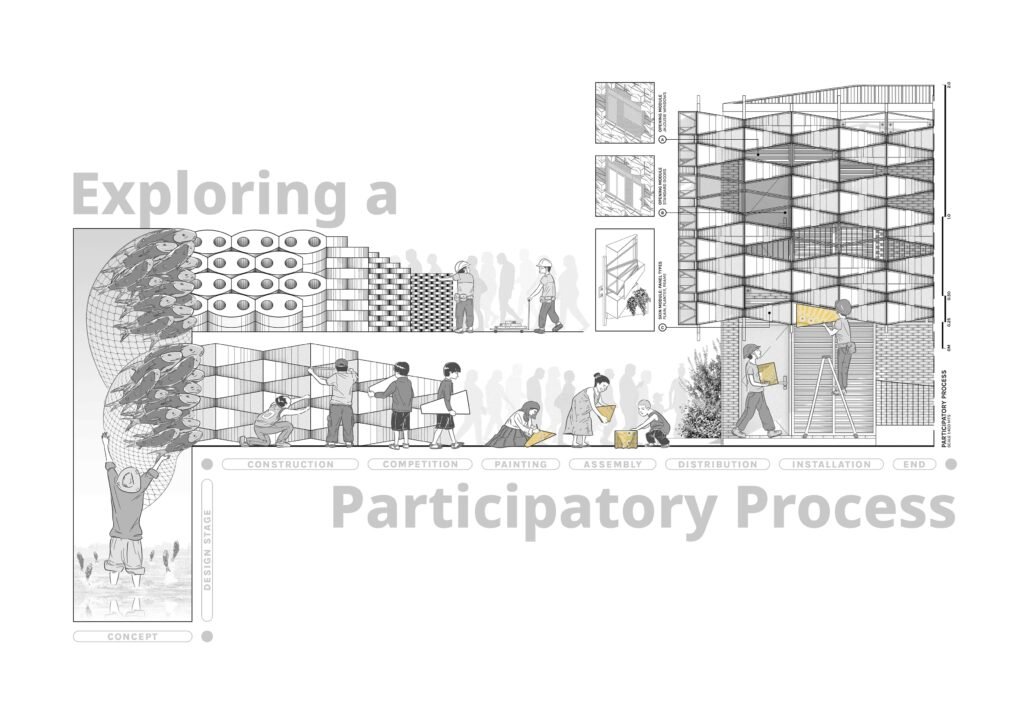

Scalability
Scalability is an oft-asked question by WAF jurors. “The thinking behind the design would remain the same, but the expression of the idea—the form—would be different,” says Buensalido.
At the heart of the Barangay Centers in Pangasinan lies a vision that transcends geographical differences and cultural divides: architecture as a catalyst for communal optimism and revitalization. While each center in Pangasinan is uniquely tailored to reflect its town’s heritage and ethos, the foundational concept driving this initiative is, in essence, universally applicable.
And this is where the concept’s true potential lies: scalability. Imagine the transformative power of applying this thoughtful, culture-sensitive design approach to the 42,029 barangays across all 81 provinces in the Philippines.
This is why I feel in my gut this project could mark a significant contribution to the field of architecture in the Philippines.
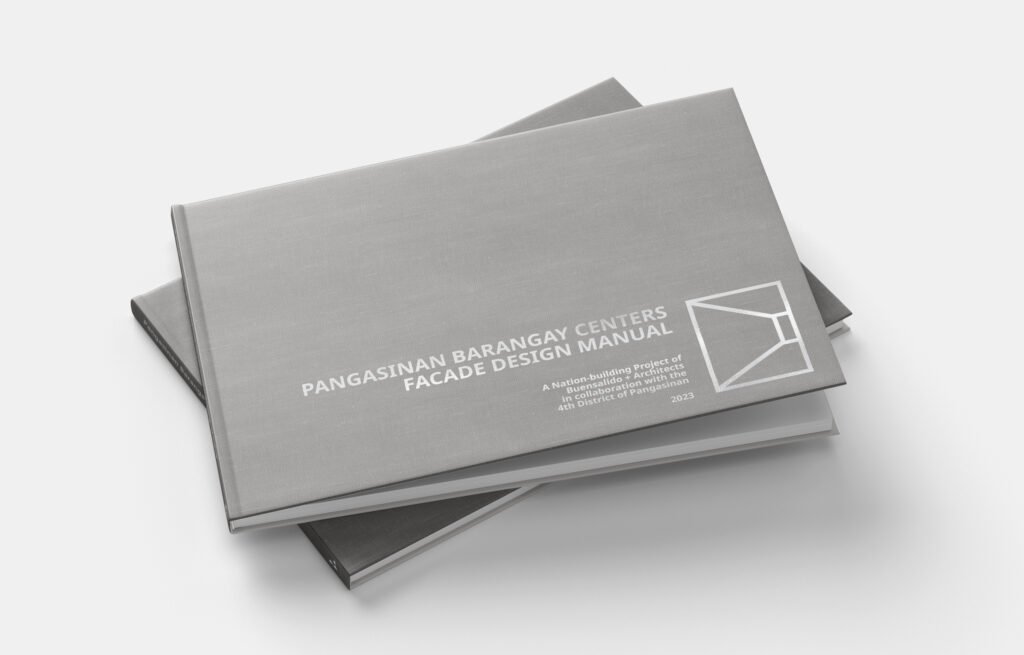

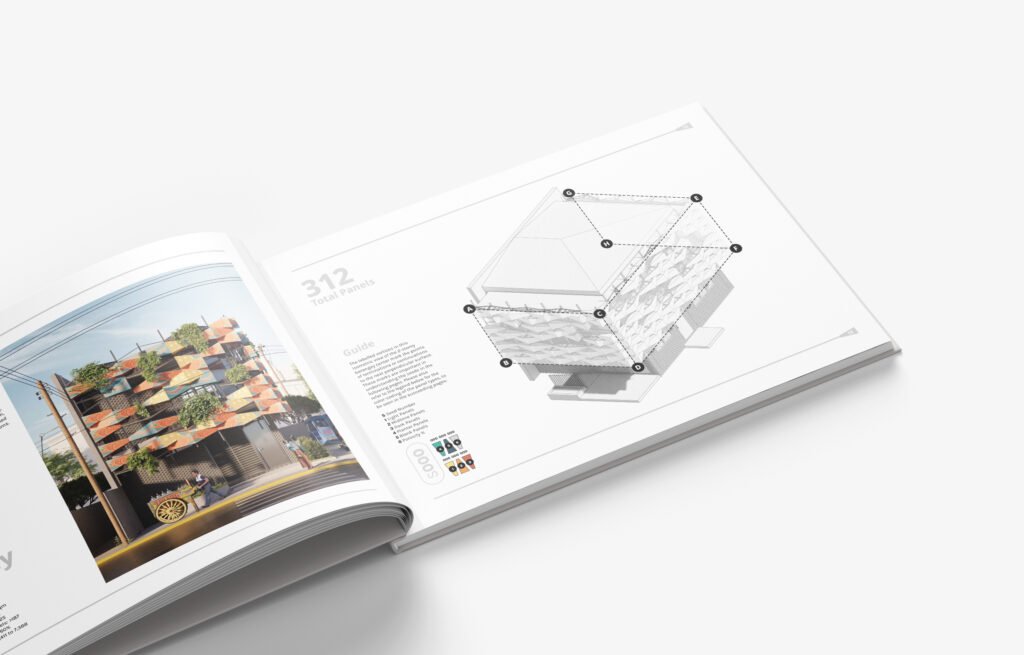
Contribution to the field
This project is a living case study demonstrating the feasibility of integrating standardized design with localized elements. Buensalido + Architects’ dream of “Architecture of Optimism” manifests here, bold, vibrant, and culturally expressive. We have here civic spaces integrating local art and ethos all the while nurturing homegrown industries right down to the barangay level—an ingenious architectural response to our uniquely Filipino setting.
As more centers are built and lessons are learned, we envision even better versions, hopefully free from the constraints of having to follow the Department of Public Works and Highways’ current plans and layouts.
With every center acting as a beacon of communal pride, we could instigate a societal metamorphosis, one barangay at a time. This is more than just architecture, it’s a bold reimagining of our communal spaces, and an investment in our collective future! •
Project Team:
Jason Buensalido
Nikki Boncan-Buensalido
Ems Eliseo
Cholo Ramirez
Aramis Corullo
Migs Razon
Lhouis Lanting
Aaron Espiritu

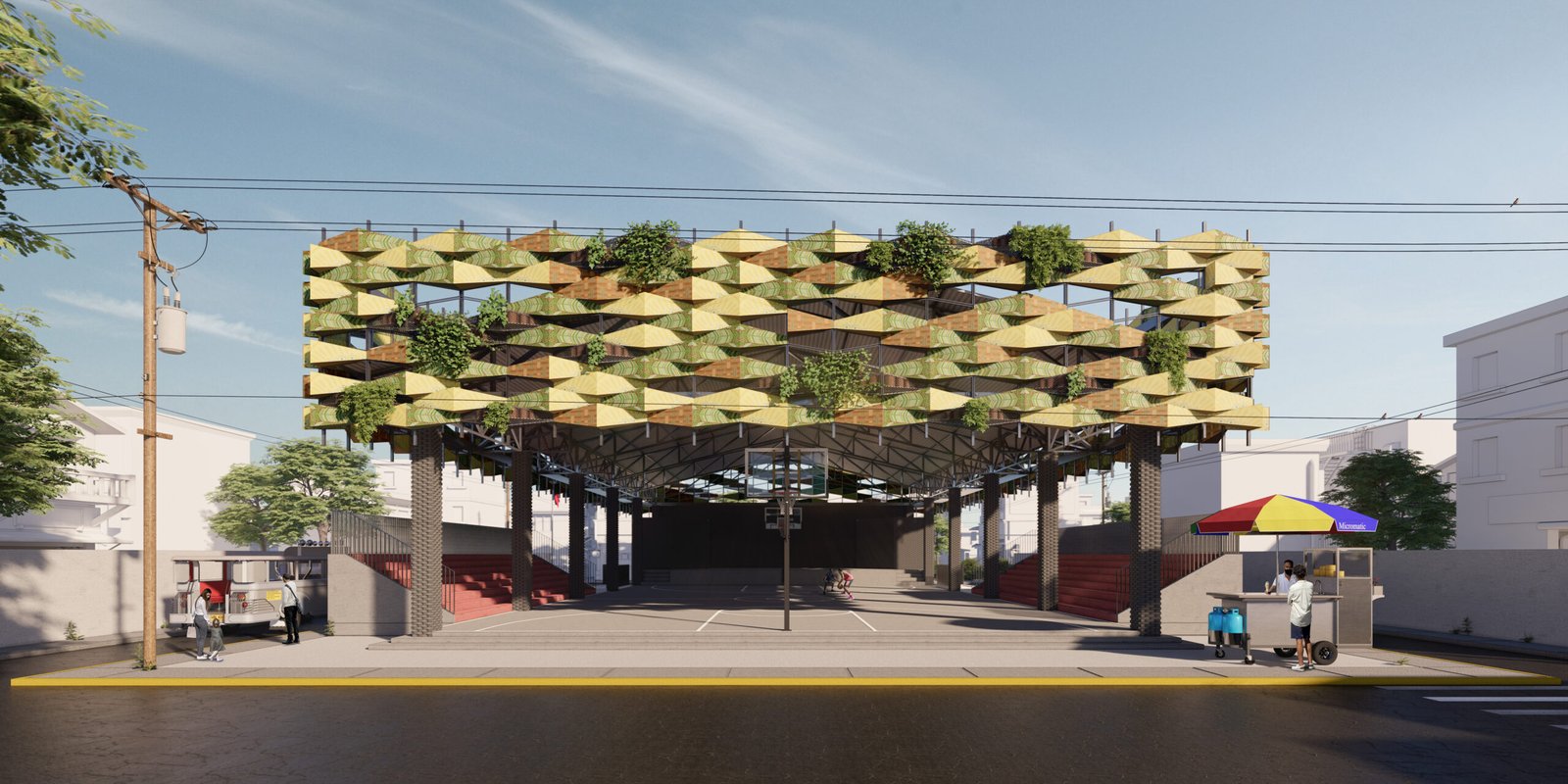

5 Responses